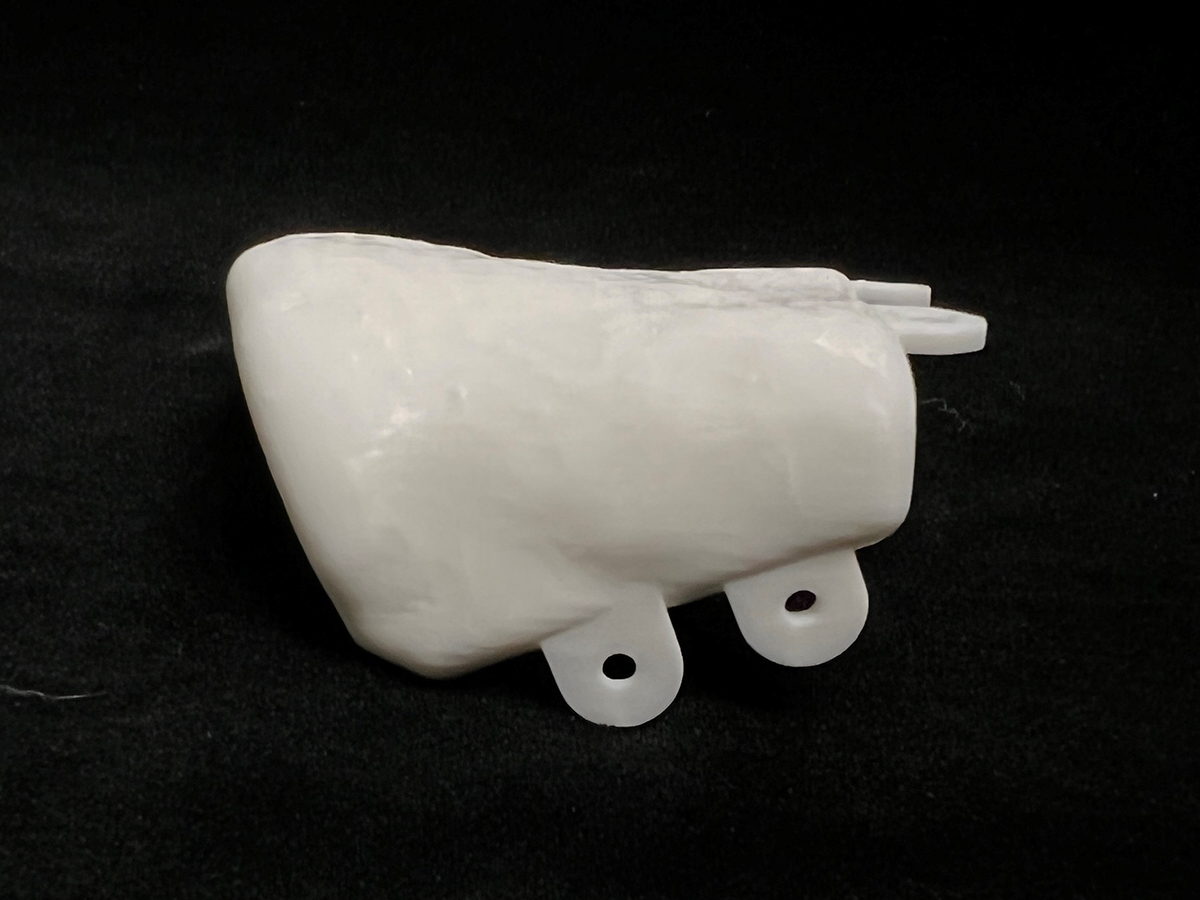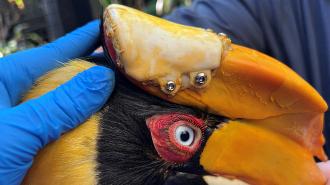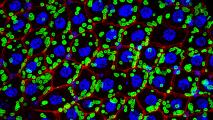To help a great hornbill at ZooTampa beat an often-fatal cancer, a team of veterinarians in Florida replaced her cancerous casque with a 3D-printed prosthetic — the first time such a surgery has ever been performed in the U.S.
“It’s our responsibility, and our privilege, to care for all of our residents, and this bird needed us to pull out all of the stops,” Kendra Baker, an associate veterinarian at ZooTampa, said in a statement shared with Freethink.
The great hornbill: The most prominent feature on the great hornbill — a large bird native to Asia — is the horn-like “casque” on the top of its head and beak. Though its exact purpose is unknown, this feature is thought to play a role in mating.
“This bird needed us to pull out all of the stops.”
Kendra Baker
When ZooTampa’s 25-year-old great hornbill, Crescent, developed a type of skin cancer on her casque that’s often deadly for hornbills, her caretakers set to work figuring out how to save the bird’s life.
“We met with human and veterinarian oncologists, and imaging scientists who specialized in human CT imaging and scanning,” Baker said. “It was an all-in effort.”
The idea: One of the people the ZooTampa team reached out to was Summer Decker, director of the 3D Clinical Applications Division at the University of South Florida’s Department of Radiology.
“We asked ourselves, if this was a human, what would we do?” Decker said. “So we began to plan how to fix Crescent’s casque using the technology we use every day on our human patients: 3D printing.”
Crescent developed a type of skin cancer on her casque that’s often deadly for hornbills.
The surgery: On January 28, surgeons from ZooTampa and USF removed the cancerous portion of Crescent’s casque, which left her sinuses exposed.
“This tumor is typically found near the front of the casque in hornbills, but hers was in the back,” Baker explained.
To protect Crescent’s sinuses while a new casque had time to grow, the team then fitted her with a lightweight, durable 3D-printed prosthetic they’d created with the help of Formlabs, a 3D-printing tech developer that works with the healthcare industry.

Two of a kind: In 2018, a team at Jurong Bird Park in Singapore used a 3D-printed prosthetic to help one of its great hornbill’s overcome cancer on its casque, but the Florida operation is the first time a procedure of this kind has been performed anywhere else.
That Singaporan bird, Jary, is still doing well, and Crescent has shown no behavioral changes since her surgery. The team at ZooTampa is monitoring her progress daily, but she’s already back at home in her outdoor aviary.
3D-printed prosthetics: Crescent and Jary might be the only great hornbills with 3D-printed casques, but the relatively low cost and high flexibility of 3D-printing tech has made it a useful tool for helping all kinds of animals overcome health issues.
Crescent is already back at home in her outdoor aviary.
The most common might be the creation of 3D-printed limbs for animal amputees — we’ve seen those on dogs and cats, penguins and ducks — but people are also using 3D printers to create bespoke beaks for birds, jaws for turtles, and even tails for alligators.
“We’re really just scratching the surface of how we think about 3D printing and how we think about everything around us,” Julio Aira IV, a developer of animal prosthetics at Dive Design, told Wired in 2020.
“It’s really amazing what we’re going to be able to do and how we’re going to be able to take advantage of these technologies,” he continued.
We’d love to hear from you! If you have a comment about this article or if you have a tip for a future Freethink story, please email us at tips@freethink.com.






